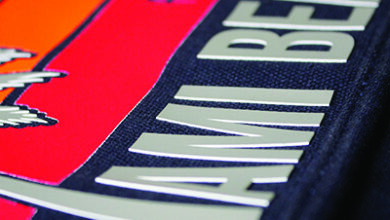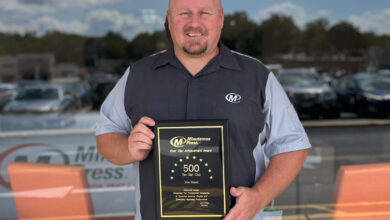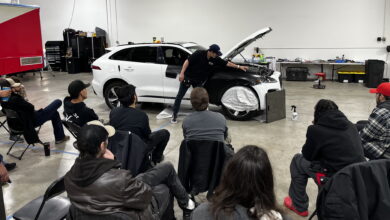
To ensure maximum performance and a long-lasting application, you’ll first want to have these pre-installation cleaning products and tools on hand:
-
- Grease and wax remover
- General paint-safe cleaner
- Isopropyl alcohol (IPA)
- Lint-free towel or lint-free paper towel
- Squeegee
- Sharp blade
- Heat gun
- Wrap gloves
In terms of application conditions and general storage of wrap film, keep these three crucial points in mind.
Temperature plays a critical role in how well the vinyl adheres to the substrate. We recommend a working temperature to be in the range of 71 F. If the temperature is too low, there is a higher risk of tearing as the cold makes the film more brittle. If the temperature is too high, the adhesive will activate and bond more aggressively. This will add difficulty when repositioning the vinyl on the target surface.
The environment you work in also matters. We strictly recommend applying film indoors, as this will not only help maintain a consistent temperature, it will also reduce the amount of dust and contaminants that may collect on the surface.
And when it comes to vinyl storage, try not to expose the film to heat sources (radiators, heaters) or direct sunlight. Keep humidity as low as possible and always store the vinyl vertically. When storing vinyl after using the product, make sure the material is tightly wound around the core.
Now that you’re ready with the right tools and working under the right conditions, it’s time for some pre-wrap prep. Here are five tips for cleaning and prepping the surface you’re about to wrap.
-
Clean the surface with paint-safe grease and wax remover to remove any dirt or grime on the surface. We recommend having the car cleaned with car wash soap (avoid using cleaners with waxes). Then proceed to rinse the surface with water.
-
Thoroughly dry the surface with a clean, lint-free towel or lint-free paper towel. Pay particular attention to ridges, corners, and seams as these areas are often neglected and may carry the most dirt and grime. To clean hard-to-reach edges, wrap a lint-free towel over a squeegee and proceed to swipe multiple times. Each swipe should be done with a clean portion of the cloth until it shows no dirt on the swiped edge. This process may be time-consuming, but often these edges, especially in vehicle wrapping installations, are where the ends of the film are anchored and may peel off if not properly cleaned.
-
Surfaces with any grease, oil, or wax significantly reduce film adhesion and may form bubbles on neglected areas. To remove these contaminants, we recommend using a grease and wax cleaner. Alcohol-based cleaners, such as isopropyl alcohol, may be used but is not as effective at removing wax in comparison to solvent-based cleaners. Alcohol is best used for spot cleaning and a quick wipe-down.
-
Make sure the substrate is completely dry before applying the film. If necessary, use a blow dryer or heat gun to speed up the process.
-
Proceed to apply the film as soon as possible to reduce the amount of dust and contaminants that may accumulate on the surface over time.



